Hello, my dear colleagues! We finally kick-started our storytelling-based program, and our first official story is Class Two at the Zoo by Julia Jarman.
As a real enthusiast of storytelling, I’ve decided to create a storytelling-based learning curriculum which will be conducted in the form of a workshop. Storytelling-based learning or narrative-based learning is not something we see in everyday practice. This method focuses on learning languages through literature, using storytelling at an early age. This curriculum is for 2nd, 3rd, and 4th grade.
Storytelling-based Learning as a Way to Promote Language Acquisition in Young Learners
Class Two at the Zoo by Julia Jarman
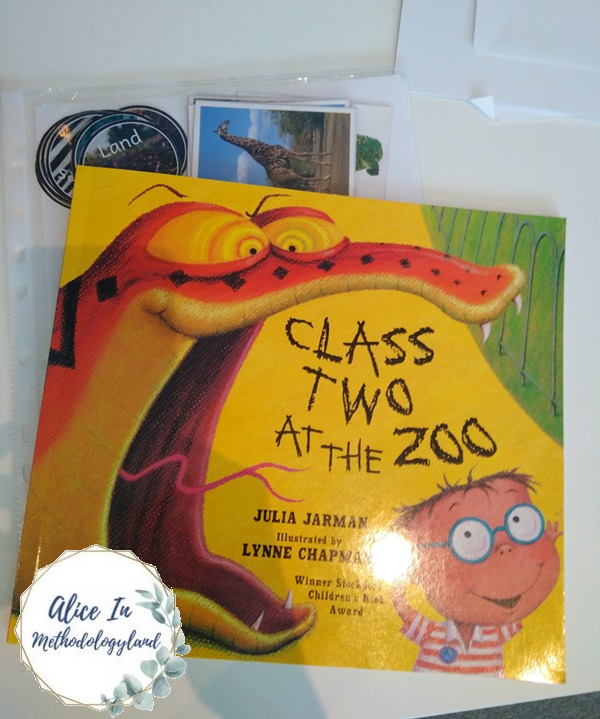
Materials, classroom decoration and applications used
Classroom preparation/decoration: Relaxing jungle music during the workshop. 3D Jungle leaves on the shelves.
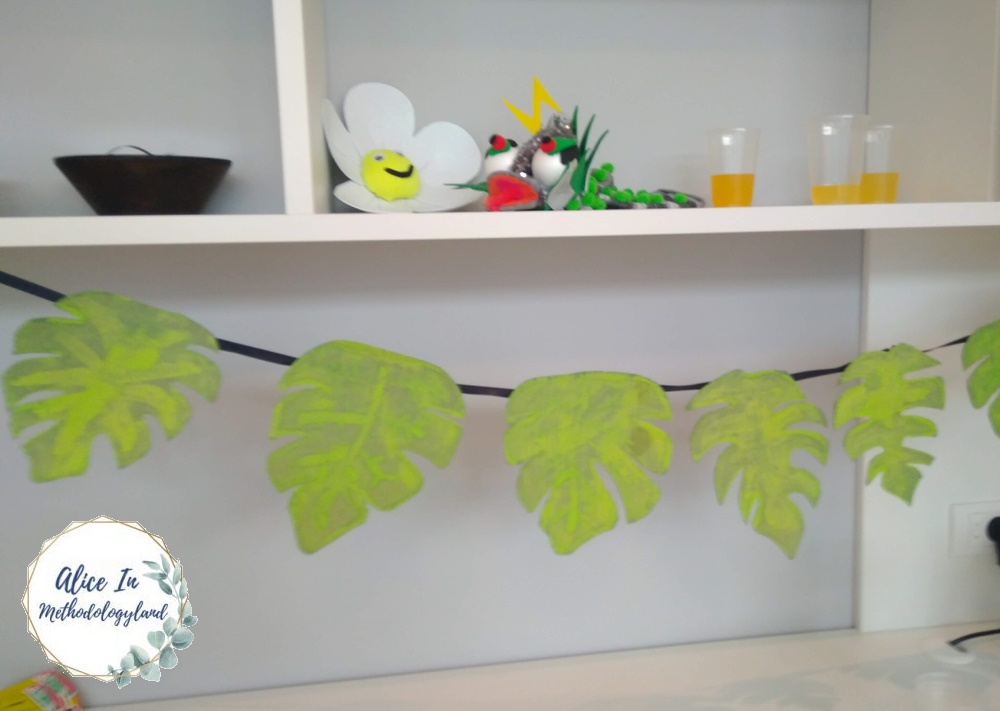
Materials needed: Flashcards, animal toys, wooden blocks, glue, scissors, printable materials, recyclable materials for the STEM building, TV, computer, Class Two at the Zoo by Julia Jarman book.
Ice-breakers/rotation station: 25 minutes
Before we started the vocabulary pre-teaching, we played a game with animal dice made of sponge. The task was to name the animal, move like the animal, and make a sound like the animal. The kids were so excited to see the next animal and asked to repeat some animals. :)
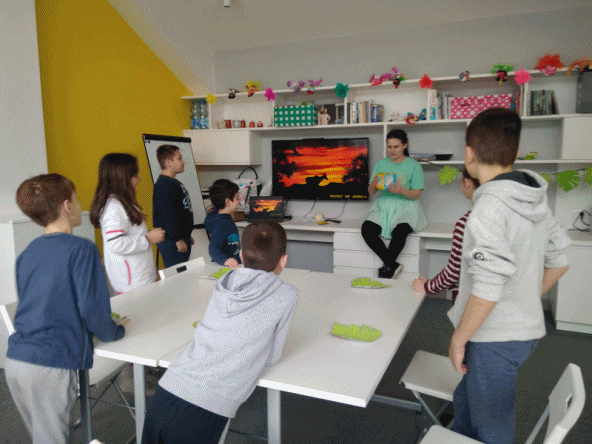
Pre-teaching the vocabulary: 15 minutes
Memory card game and TPR for verbs – we listed all verbs on the whiteboard and then demonstrated them with our bodies. The children had so much fun! After that, we played a memory game with animal flashcards until we could remember all the animals that will appear in the story.
To review our knowledge about animals, we had to sort a mix of flashcards and animal toys into a Venn diagram – Which animal is slow, which one is fast, and which one moves at a medium speed?
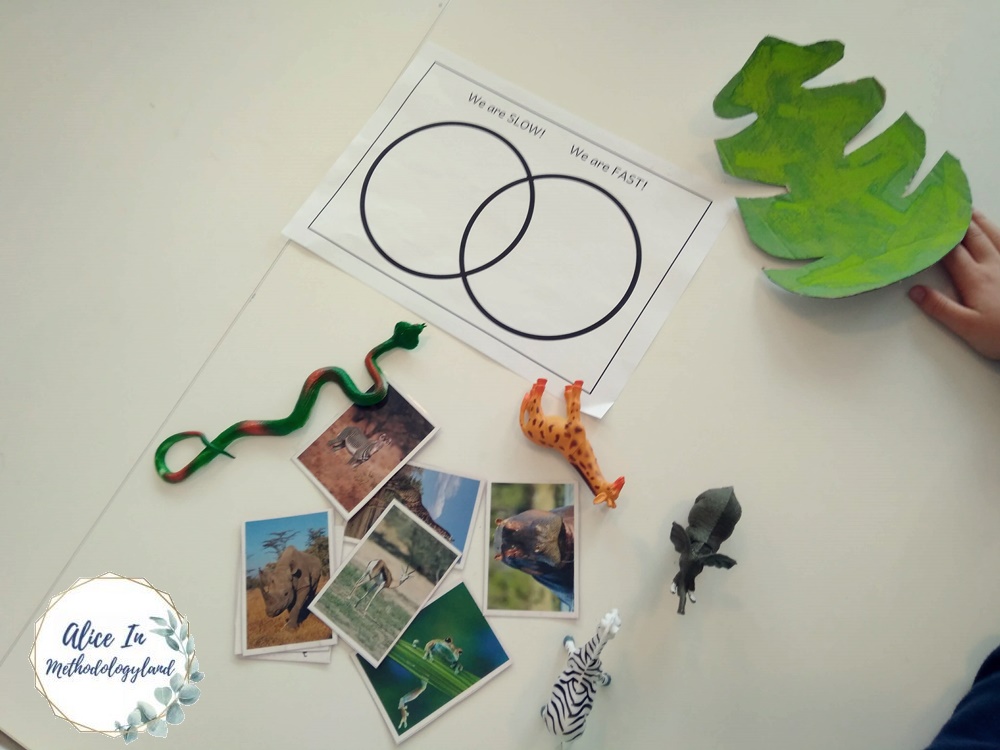

After that, we did some more sorting, but we sorted the animals according to the place they live in. We had to use the ZOO since a ZOO is in the book, but we also discussed where these animals live in the wilderness.

Finally, we sorted animals based on their species, habitat, and type of skin/fur.
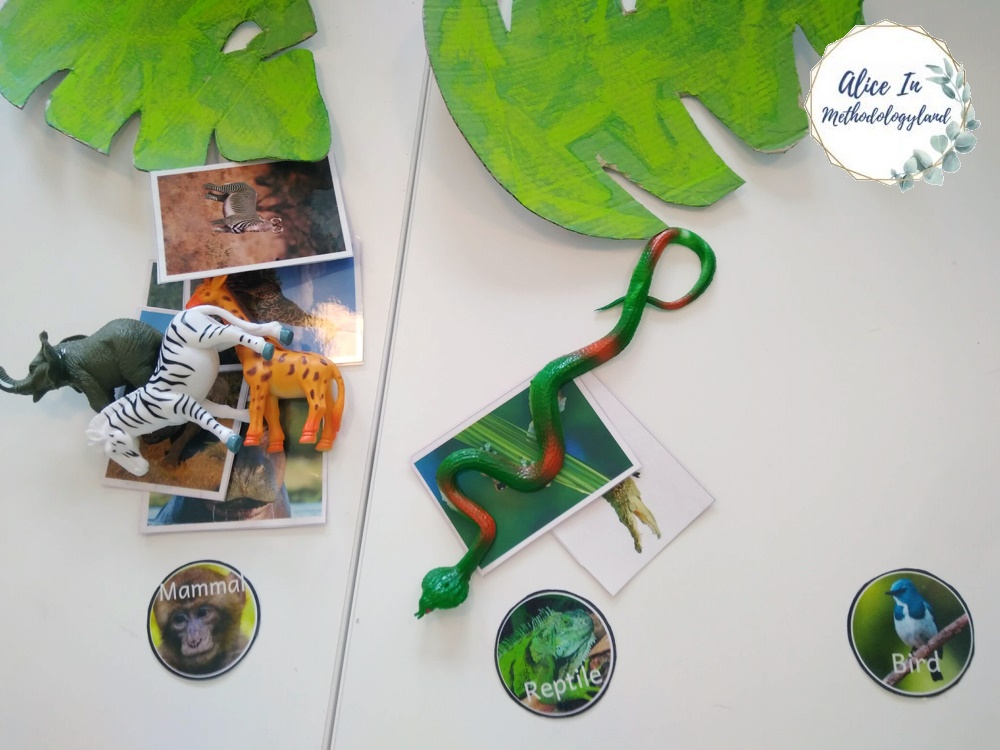
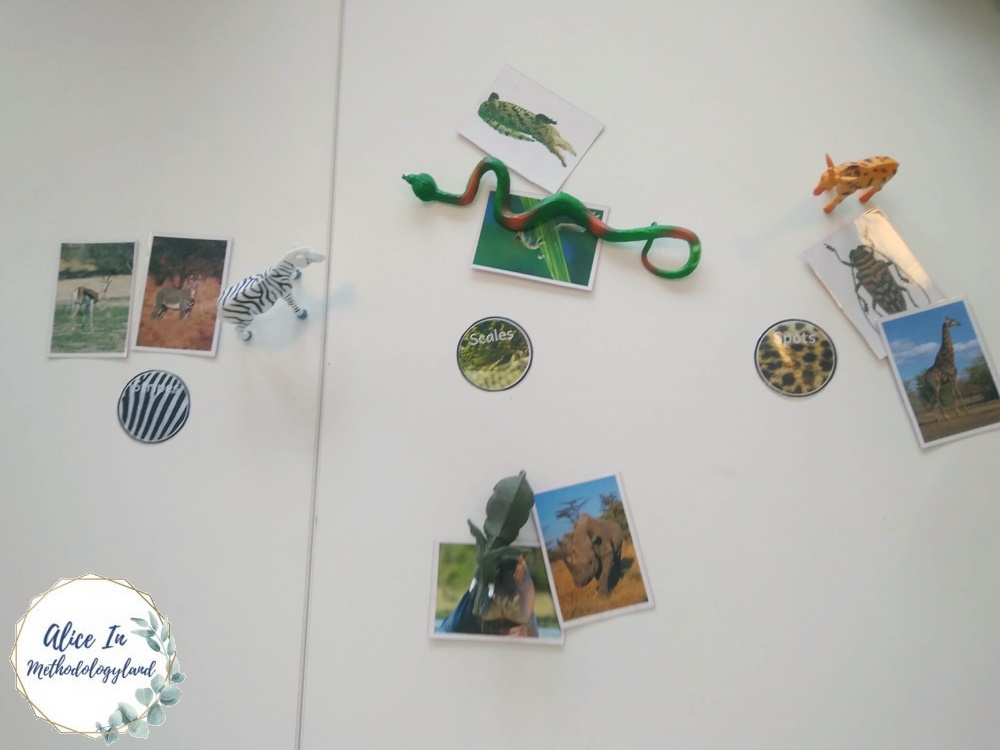
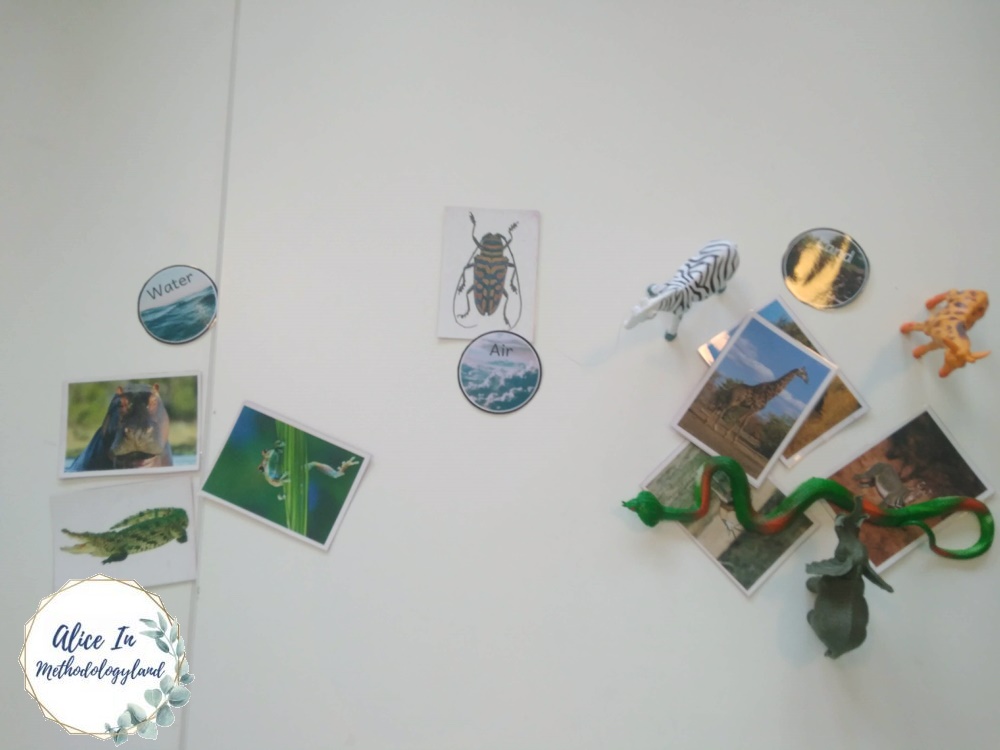
Dramatization: 10-15 minutes
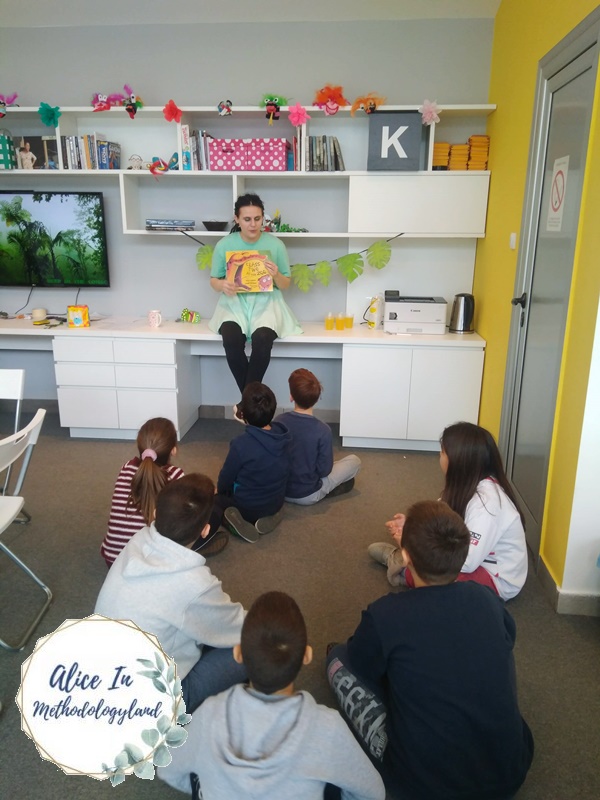
The children had a listening task/TPR task during the dramatization: they had to listen for the animals in the story and make a sound and movement. Their other task was to respond to my questions about the story we are reading and describe the book’s pages.
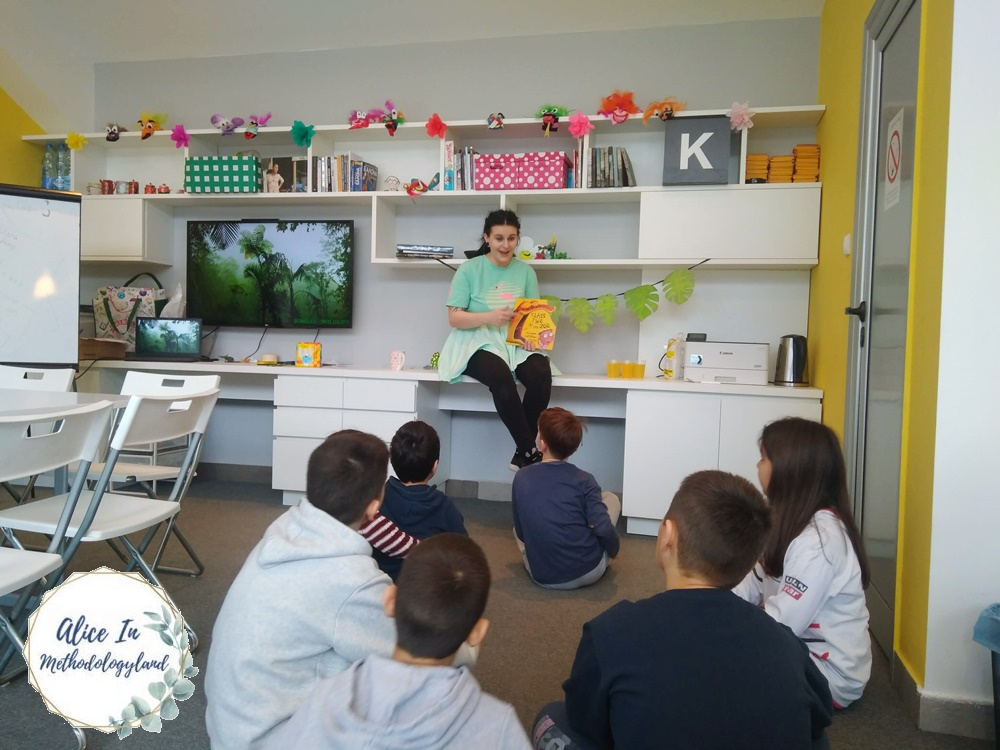
We also listened to music during dramatization – the children had a choice between natural jungle sounds or tribal jungle music.

Post dramatization activities/group work: 20
- Discussion;
- Make a list of all the rhyming words in the book;
- Look for examples of alliteration – koala kissing a kangaroo;
- Story sequencing with black and white pages printed out;
- Making your own ending – draw it and write;
- Find all the words anaconda uses to eat the children;
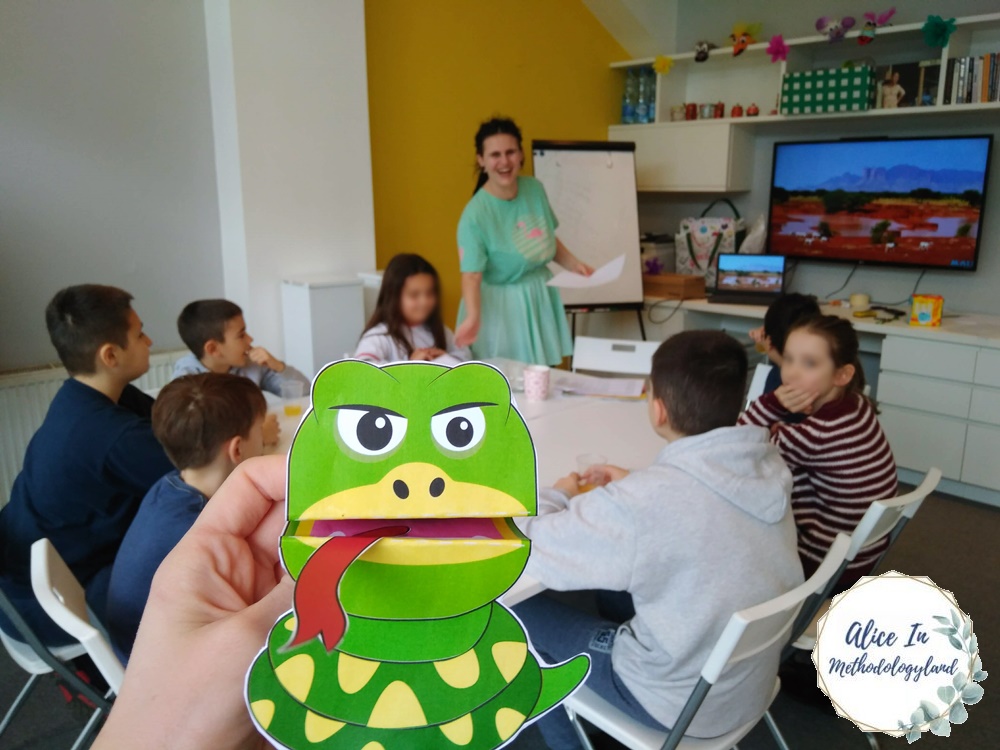
Rewriting/redrawing our own end of the story
Everyone got a chance to draw their own ending. Rewards for best endings went to:
- The story where Sonic beat the anaconda.
- Someone celebrated their birthday, and when the anaconda came, she joined and ate a cake instead of eating the children.
- Finally, in the last story, the teacher had to marry the anaconda so that the anaconda does not attack the class hahah!


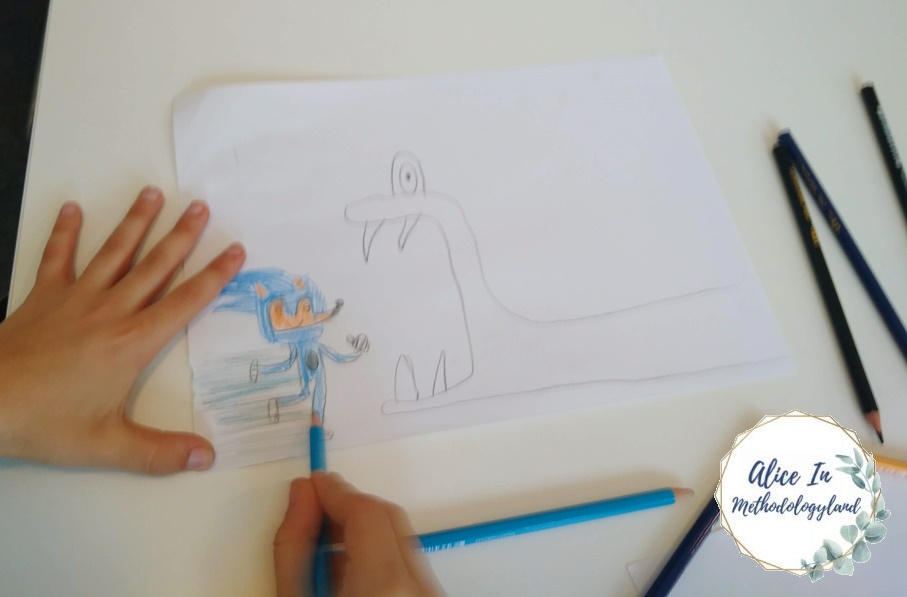
Sequencing the story
To sequence the story, we used scanned book pages and just threw them on the floor! The children had to collaborate and sequence the story together. This activity lasted for a long time, but they enjoyed it, and they managed to sequence the story in the end!
We started the sequencing by closing our eyes and throwing the papers in the air while jumping and screaming. We all enjoyed it, and the kids were shocked because I allowed such chaos in the classroom. They were literally confused and reluctant to jump for the papers and have fun.
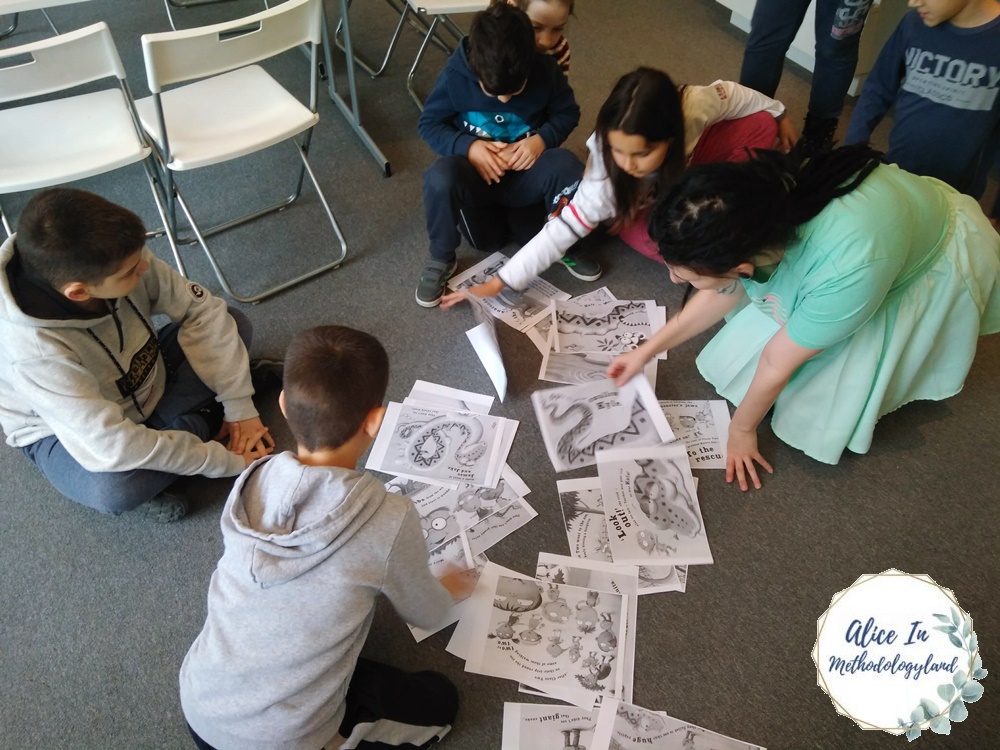


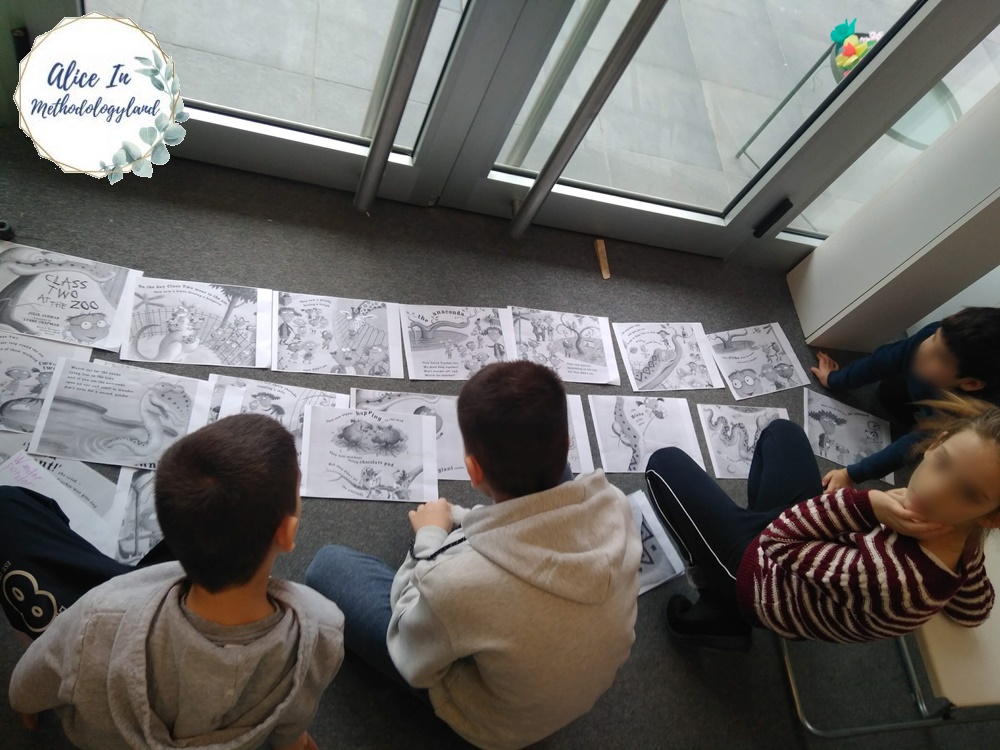
Making a list of all the rhyming words in the book
This task was a bit harder, so the oldest children did it. They managed to find around 8 pairs, and I was really impressed!

Funny fill-in at National Geographic Kids: Jungle style
Funny fill-ins represent a great way to revise vocabulary and word forms! The children had to input the words according to the word form, and then the funny fill-in generates a funny story, which we then read! They loved their story, and they were laughing out loud while I read it. We also acted it out.
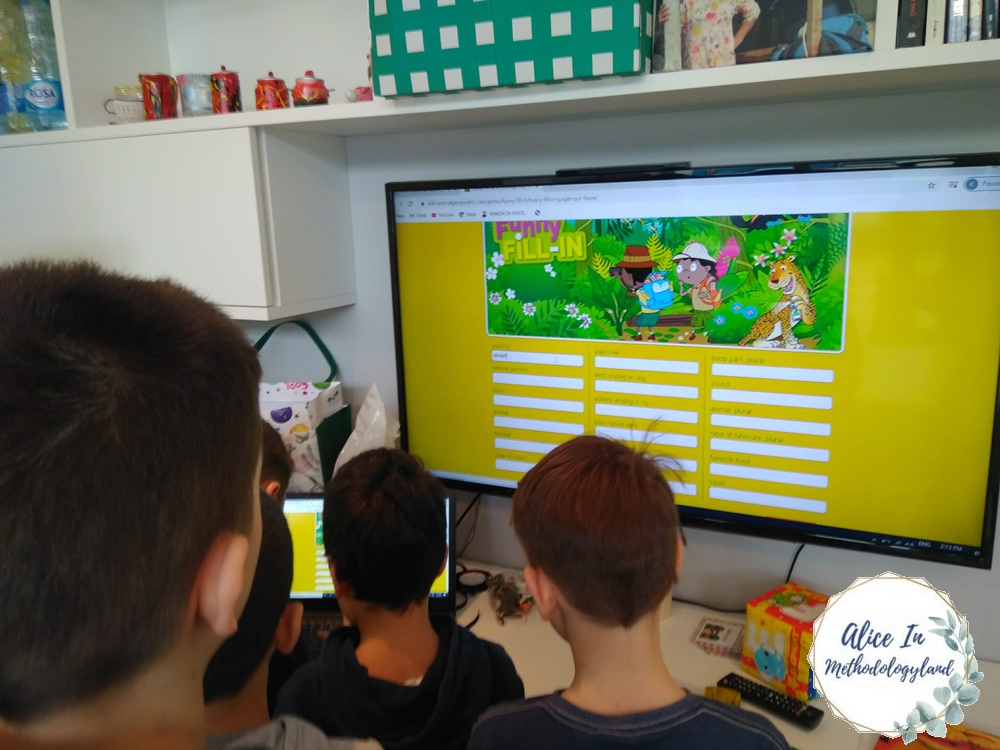
Their words

The final product – a funny story about a safari trip gone wrong!

Workshop – making the animal masks for dramatizing and chatting in English
We printed out masks and let the children decorate them with recyclables, colored pencils, and markers. They had the task of thinking about their character while decorating it.

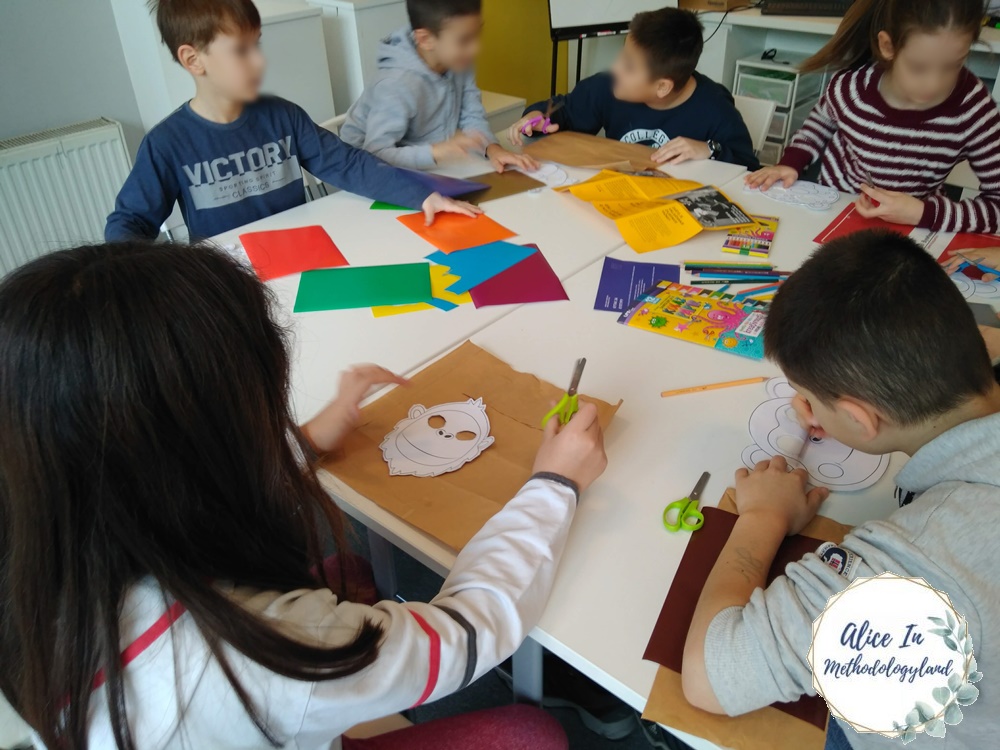
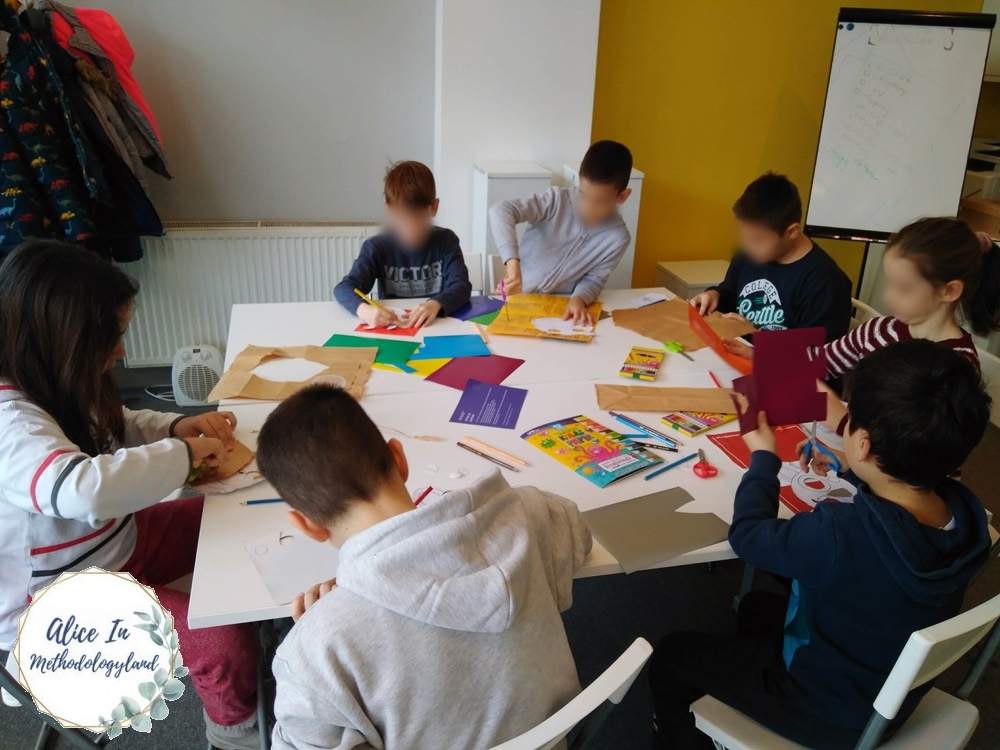
We dramatized the story at the end of the workshop, but there were no photos since we were all acting and there was no one to take photos. It’s a shame because it was really amazing! The goal was to assess what we learned, and the kids remembered everything! We finished our acting with the pulling scene, and the kids saved the class by pulling it from the anaconda’s mouth.
STEAM Zoo building
The children were given flashcards they needed to follow to build a zoo. They were given cardboard, paper, wooden blocks, toy animals, and flashcards. The children needed to think about all the things a specific animal needs and build this space to have specific functions with the given materials. They didn’t want to stop building and they really liked it, so we have to add more STEM activities in our future workshops.
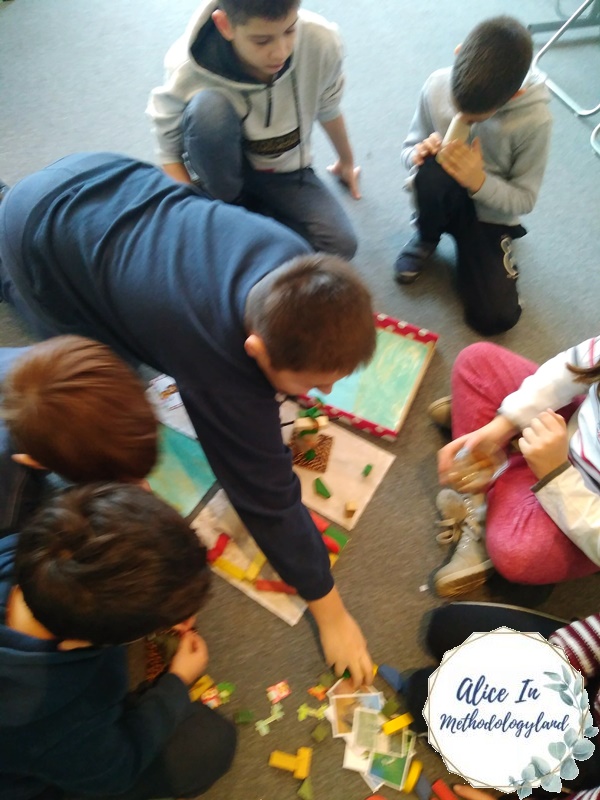
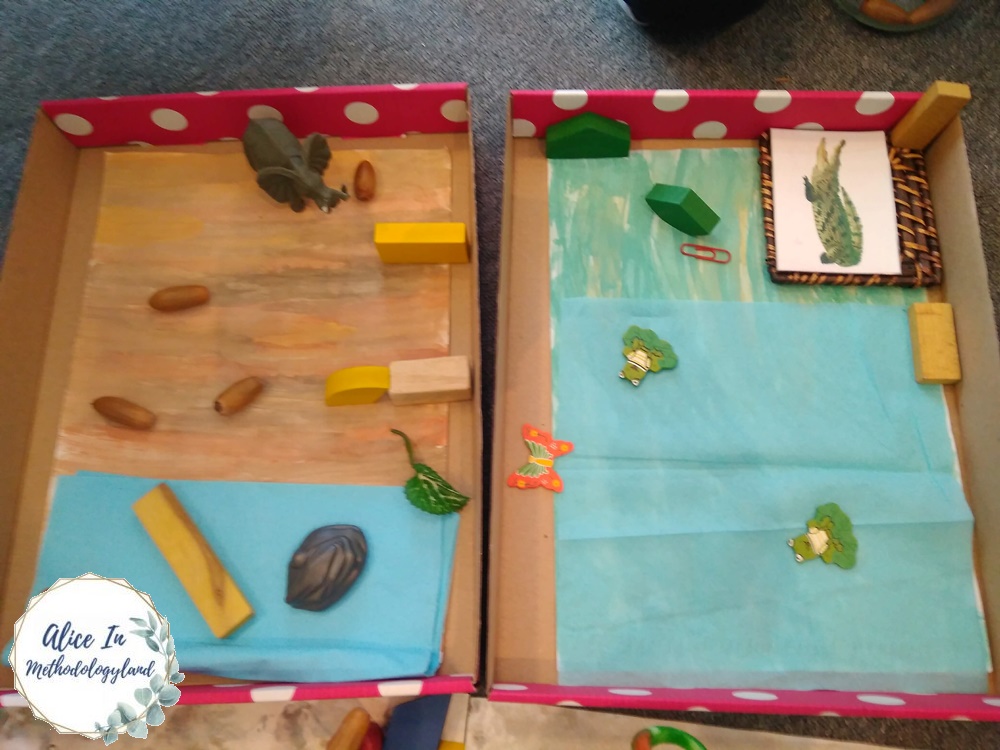
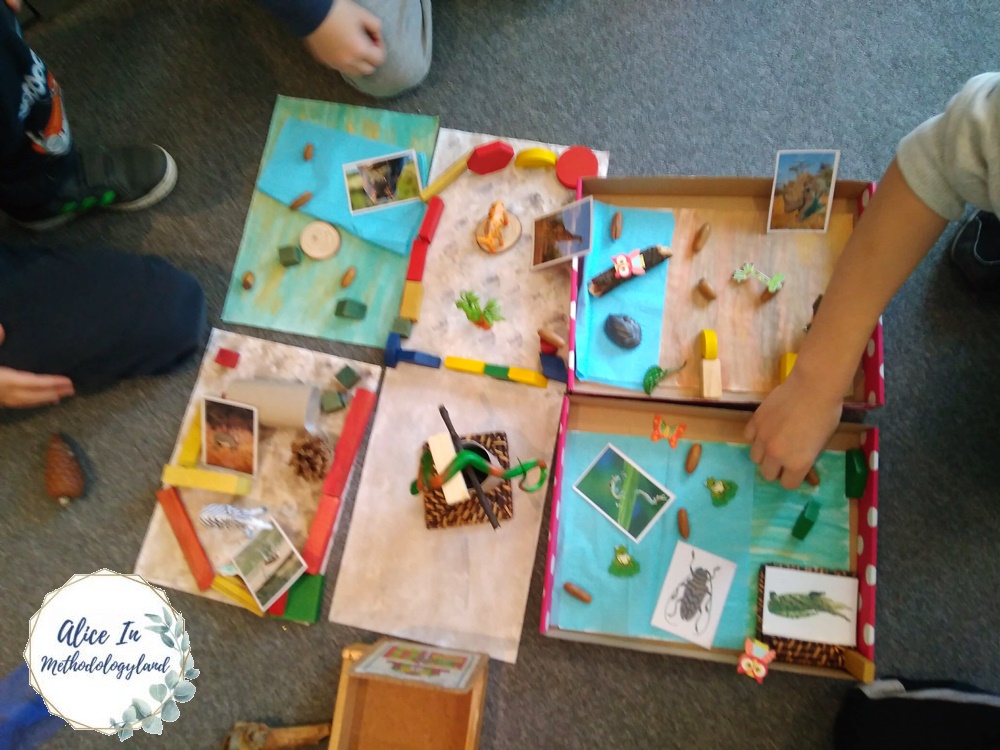
Additional activities we didn’t manage to complete
I always add some extra activities in case we finish earlier than planned. Unfortunately, that didn’t happen this time, but here are the activities.
- Rewrite the story from the anaconda’s point of view;
- Make music/rhythm from the jungle/zoo with the objects from the classroom.
Cannot invest in printed books for your classroom? Find thousands of titles online for free!

To conclude
The first official storytelling workshop was beyond amazing, and Class Two at the Zoo was a good book choice for an ice-breaker! We had 3 other workshops before that, all with the get-to-know-me topic, and the group bonded and learned how to work together. The children enjoyed it so much, and we were able to do so many activities. I wish to spend more time dramatizing the book at the end of the workshop next time because this time, we had only 10 minutes since they liked playing with the STEM zoo very much.
Posts about previous workshops and the program
- Storytelling-based Learning as a Way to Promote Language Acquisition in Young Learners
- Wonderland Workshop 1 – Ice Breakers, Dr. Seus – All About Me + Bounty (Storytelling-based Learning)
- Wonderland Workshop 2 – Ice Breakers, TPR games, Puppet Crafting (Storytelling-based Learning)
- Wonderland Workshop 3 – Furniture sorting game, Cooking game, Board Game, Time Capsule (Developing Collaboration in the Group)
What do you think about learning English in informal education? Do you like the concept of storytelling-based learning blended with crafting and a workshop? Do you think that this program can positively affect children’s language level and 21st-century skills? Please write in the comments. I would love to hear your opinion!

Click here to explore our materials corner where 99% of materials are forever free!
All the materials except lesson plans and 30+ page interactive activity books will be free FOREVER! Why? Because sharing is caring, and the past few years have not been kind to any of us. Please consider donating so we can keep making FREE materials for everyone.
Don’t forget to leave a review when you download materials! It’s just a minute of your time, and it means a lot to us.
P.S. The store and the freebie library are not the same things – the freebie library has some extra materials like conference presentations and webinar recordings which are not available in the store
The subscription link for the store is below the author’s bio in every post.
*Our articles may contain affiliate links, which is one of the ways we keep our organization functioning, and we might earn a small commission on links, at no cost to you.

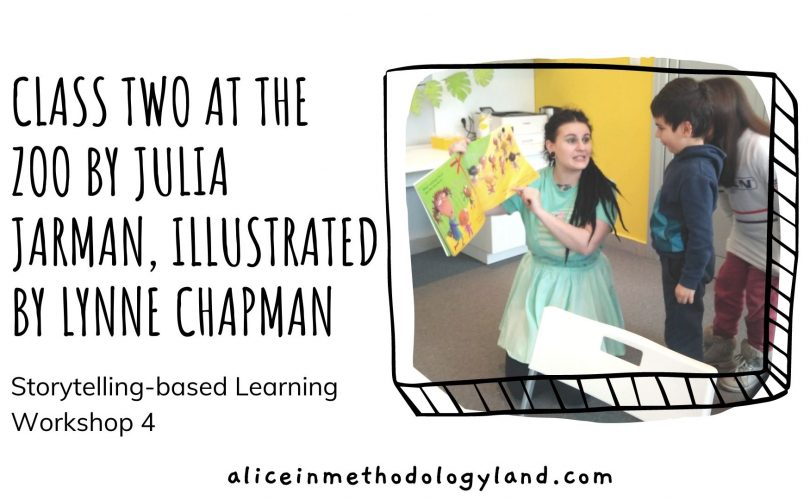


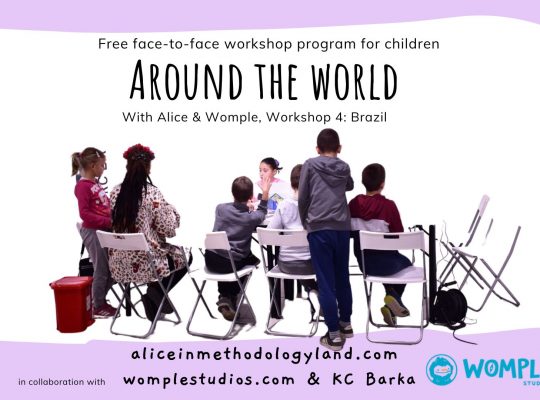
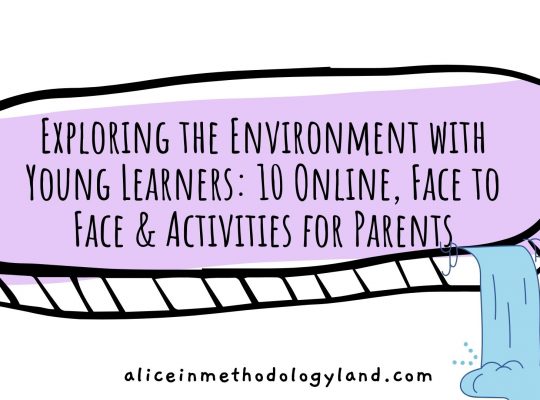


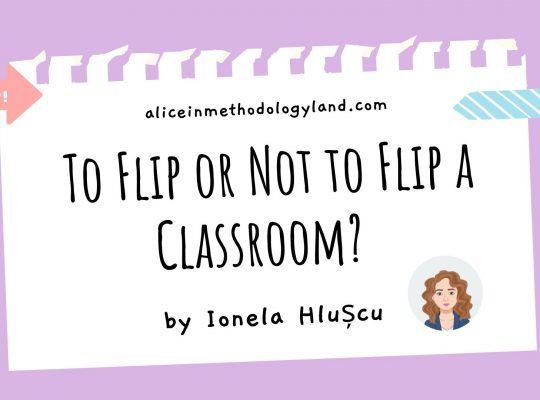
[…] Class Two at the Zoo by Julia Jarman […]
[…] Learning- Workshop 6: Dear Mother Goose by Michael Rosen & Nick Sharratt Storytelling-based Learning- Workshop 4: Class Two at the Zoo by Julia Jarman, illustrated by Lynne … Storytelling-based Learning- Workshop 5: The Mood Hoover by Paul Brown, Illustrated by Rowena […]
[…] Storytelling-based Learning- Workshop 4: Class Two at the Zoo by Julia Jarman, illustrated by Lynne … […]
[…] Storytelling-based Learning- Workshop 4: Class Two at the Zoo by Julia Jarman, illustrated by Lynne […]
[…] Class Two at the Zoo by Julia Jarman […]
[…] Storytelling-based Learning- Workshop 4: Class Two at the Zoo by Julia Jarman, illustrated by Lynne … The Mood Hoover by Paul Brown and Rowena Blyth – Storytelling-based […]